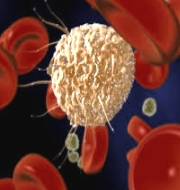Scientists develop 3-D printing method to make embryonic stem cells
Scientists from China and United States have developed a 3-D printing method to produce highly uniform ‘blocks’ of embryonic stem cells.
The method was developed by the researchers from Beijing based Tsinghua University (China) and Philadelphia based Drexel University (US).
Key facts
- The new method used extrusion-deposition based 3-D printing technology to produce a grid-like 3-D (three dimensional) cell structure to grow embryoid body.
- This 3D printed embryoid body demonstrated cell viability and rapid self-renewal for 7 days by maintaining high pluripotentcy.
- The grown embryoid body in such a controlled manner is uniform and homogenous and serves as a basic starting point for further tissue growth.
- Potential Applications: These cells are capable of generating all cell types in the body which could be used as the ‘Lego bricks’ to build larger structures of tissues , tissue constructs and even micro-organs.
- This technique can be further enhanced to produce embryoid body at a high throughput, providing the basic building blocks for tissue regeneration and for drug screening studies.
About 3D printing technology
- 3D printing is a process of making 3-D (three dimensional) solid objects from a digital file with extreme precision.
- This technology is also termed additive manufacturing as the 3D printed object is created us additive processes i.e. by laying down successive layers of manufacturing material on each other until the entire object is created.
- This technology has limitless possibilities and can create almost anything with just raw material and a computer generated model.
Month: Current Affairs - November, 2015
No Comments
Leave a Reply
You must be logged in to post a comment.



Pratyush
November 17, 2015 at 5:04 amIts good